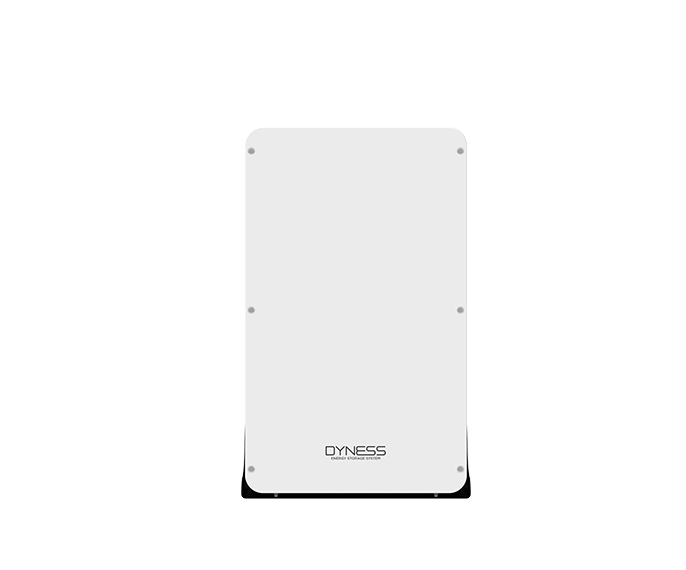Dyness Knowledge | Lithium battery SOC concept analysis
-
Technical Blog
-
2025-04-16
-
Dyness

Scientific, efficient, and relatively accurate measurement of SOC of lithium batteries not only has scientific measurement methods but also requires advanced software algorithms as a necessary guarantee for battery companies to obtain real-time values.

Abstract: Lithium-ion batteries are more and more widely promoted and used in modern life. The State of Charge (SOC) of a lithium battery is equivalent to a car's fuel tank. Always remind the user how much power is currently available, for example, 100% power is equal to a full gas tank. 0% means that the battery is exhausted, that is, no gasoline is in the fuel tank.
Scientific, efficient, and relatively accurate measurement of SOC of lithium batteries not only has scientific measurement methods but also requires advanced software algorithms as a necessary guarantee for battery companies to obtain real-time values. This requires battery manufacturers to continuously improve and upgrade the algorithm of their battery management system (BMS) so that users can obtain relatively accurate power information and understand the health status of the battery during use. By writing the corresponding program in the BMS system in advance, the SOC value is calculated by the voltage method, the Kalman filter measurement method, or the coulomb counting method.
1. Lithium-ion batteries are essential in our everyday lives, powering consumer electronics from smartphones to electric cars.
SOC is one of the important indicators of battery performance and life. SOC is defined as available capacity [in (Ah-Ampere hours)] and expressed as a percentage of its rated capacity. The SOC parameter can be viewed as a thermodynamic quantity that enables one to evaluate the potential energy of the battery. It is also important to estimate the battery's state of health (SOH), which represents a measure of a battery's ability to store and deliver electrical energy compared to a new battery (Ghazel, 2017).
If a battery is discharged too deeply or charged too often, it can affect its overall health and shorten its lifespan. Keeping the SOC within a safe range is especially important to ensure battery life and optimum performance. In general, it is recommended to keep the SOC between 20% and 80%. Anything below 20% or above 80% can stress the battery and shorten its overall lifespan. Some international manufacturers indicate this in the battery column of their consumer electronics products. When the SOC is to be maintained in this range, the activity of lithium ions in the battery should be maintained as much as possible and the life of the battery should be extended as much as possible.

2. The measurement of SOC can be divided into the algorithm based on the measurement model, or the measurement method based on the battery charge and discharge throughput and the battery body voltage to obtain the value. It's just that there are differences and emphases among the three. Therefore, the SOC values calculated by the three methods also have relative deviations.
3. Coulomb counting
Also known as ampere-hour counting and current integration. When the battery is charging and discharging, the SOC is estimated by accumulating the charged and discharged electricity. The calculation method is as follows:

C(max): battery (maximum) capacity; I(now) current (A); t: time
The disadvantages of this metering method are: 1. Errors are caused by current sampling. 2. The error caused by the change of battery capacity. 3. Errors caused by the estimation and selection of the initial and final values of the SOC, which in turn affect the calculation of the overall value.
This method only roughly records the amount of electricity entering and exiting the battery from the outside, but ignores the attenuation caused by the replacement of lithium ions inside the battery, as well as the generation of lithium dendrites and other variables that affect the SOC calculation of the battery "from the inside out". And the error will only get bigger and bigger as time goes by. Due to this disadvantage, battery companies are required to continuously upgrade their BMS to reduce errors.
4. Open circuit voltage method
A battery's SOC, or its remaining capacity, can be determined using a discharge test under controlled conditions. This algorithm uses the battery's known discharge curve (voltage vs. SOC) to convert a battery voltage reading to an equivalent SOC value. However, the voltage is more affected by the battery current due to the electrochemical kinetics and temperature of the battery. This method can be made more accurate by compensating the voltage reading with a correction term proportional to the battery current and using a lookup table of the battery pen circuit voltage (OCV) and temperature. Batteries require a stable voltage range, which makes the voltage approach difficult to implement. Additionally, discharge testing often involves continuous charging, making most applications time-consuming.
In addition, the curve of the open circuit voltage of lithium iron phosphate battery between 30% and 80% is almost a straight line, and it is more difficult to find the corresponding value. Therefore, this method is most suitable for the case where the battery has been left standing for a long time and is not used frequently.
5. Kalman filter method
A dynamic simulation algorithm for detecting the battery cell’s internal state is suitable for calculating the battery SOC value. The method itself provides dynamic error bounds, employs error correction mechanisms, and provides real-time prediction of SOC. Although Kalman filtering is an online and dynamic method, it requires a suitable battery model and precise identification of its parameters. It also requires large computing power and accurate initialization.
In summary, the SOC value is a core consideration in battery manufacturing. It is not only related to the intuitive body feeling of the user when using the battery, but also affects the service life of the battery, or the investment cost of the customer to purchase the battery. Therefore, maintaining the battery SOC value within a recommended range during use, and updating the battery product firmware in real time are important guarantees to ensure product life and user experience.

Quotations
GhazelMurnane & AdelMartin. (2017). A Closer Look at State of Charge (SOC) and State of Health (SOH) Estimation Techniques for Batteries.
Minho KimKim, Jungsoo Kim,Jungwook Yu, Soohee HanKwangrae. (2018). State of Charge Estimation For Lithium Iion Battery Based on Reinforcement Learning. ScienceDirect, page 404-408.
Dyness Digital Energy Technology Co., LTD
web:www.dyness.com
Tel: +86 400 666 0655 Email: info@dyness-tech.com
Address: No.688, Liupu Road, Suzhou, Jiangsu China
Dyness community: https://www.facebook.com/groups/735600200902322

































































